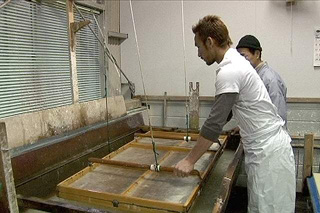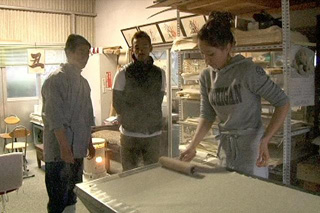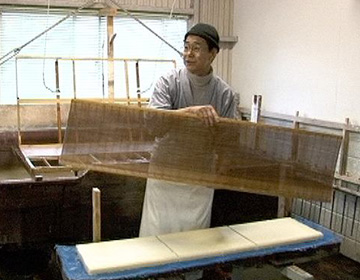 |
Special techniqueAbout 30 km south from Ikazaki, the production area of Ozu ”washi”, traditional Japanese paper. The tradition of ”washi” making is still present, also here in the town of Nomura. |
Using the things from Iwate as materialIn the past, because of its strength, it was used for drawing, and writing and for books among the aristocrats and warriors of Kyoto and Edo, and also among the common people as oil paper, book covers of ledgers, tags for pawn shops and clothing stores, and also as ”tatoushi” to wrap ”kimono” with. In Nomura-cho, the industry prospered as a side business for farmers during the winter, but after the war there was a decline in demand and many abandoned the business. |
 |
ACCESS
- Senkashi
- Seiyo-shi, Ehime Prefecture
 Discovering Japan [Nihon] through authentic craftsmanship [Honmono]
Discovering Japan [Nihon] through authentic craftsmanship [Honmono]